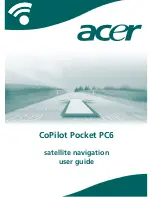
Glossary
ExtremeWare XOS 11.1 Concepts Guide
464
link type
In OSPF, there are four link types that you can configure: auto,
broadcast, point-to-point, and passive.
load sharing
Load sharing, also known as trunking or link aggregation, conforms to
IEEE 802.3ad. This feature is the grouping of multiple network links
into one logical high-bandwidth link. For example, by grouping four
100 Mbps of full-duplex bandwidth into one logical link, you can crete
up to 800 Mbps of bandwidth. Thus, you increase bandwidth and
availability by using a group of ports to carry traffic in parallel
between switches.
LSA
Link state advertisement. An LSA is a broadcast packet used by link
state protocols, such as OSPF. The LSA contains information about
neighbors and path costs and is used by the receiving router to
maintain a routing table.
LSDB
Link state database. In OSPF, LSDB is a database of information about
the link state of the network. Two neighboring routers consider
themselves to be adjacent only if their LSDBs are synchronized. All
routing information is exchanged only between adjacent routers.
M
MAC address
Media access control address. The MAC address, sometimes known as
the hardware address, is the unique physical address of each network
interface card on each device.
MAN
Metropolitan area network. A MAN is a data network designed for a
town or city. MANs may be operated by one organization such as a
corporation with several offices in one city, or be shared resources
used by several organizations with several locations in the same city.
MANs are usually characterized by very high-speed connections.
master node
In EAPS, the master node is a switch, or node, that is designated the
master in an EAPS domain ring. The master node blocks the
secondary port for all non-control traffic belonging to this EAPS
domain, thereby avoiding a loop in the ring.
master router
In VRRP, the master router is the physical device (router) in the VRRP
virtual router that is responsible for forwarding packets sent to the
VRRP virtual router and for responding to ARP requests. The master
router sends out periodic advertisements that let backup routers on
the network know that it is alive. If the VRRP IP address owner is
identified, it always becomes the master router.
master VLAN
In ESRP, the master VLAN is the VLAN on the ESRP domain that
exchanges ESRP-PDUs and data between a pair of ESRP-enabled
devices. You must configure one master VLAN for each ESRP domain,
and a master VLAN can belong to only one ESRP domain.
MED
Multiple exit discriminator. BGP uses the MED metric to select a
particular border router in another AS when multiple border routers
exist.
L
(continued)
Содержание ExtremeWare XOS 11.1
Страница 16: ...Contents ExtremeWare XOS 11 1 Concepts Guide 16...
Страница 20: ...Preface ExtremeWare XOS 11 1 Concepts Guide 20...
Страница 21: ...1 Using ExtremeWare XOS...
Страница 22: ......
Страница 78: ...Managing the ExtremeWare XOS Software ExtremeWare XOS 11 1 Concepts Guide 78...
Страница 168: ...Virtual LANs ExtremeWare XOS 11 1 Concepts Guide 168...
Страница 200: ...Policies and ACLs ExtremeWare XOS 11 1 Concepts Guide 200...
Страница 252: ...Security ExtremeWare XOS 11 1 Concepts Guide 252...
Страница 265: ...2 Using Switching and Routing Protocols...
Страница 266: ......
Страница 294: ...Ethernet Automatic Protection Switching ExtremeWare XOS 11 1 Concepts Guide 294...
Страница 354: ...Extreme Standby Router Protocol ExtremeWare XOS 11 1 Concepts Guide 354...
Страница 416: ...IP Multicast Routing ExtremeWare XOS 11 1 Concepts Guide 416...
Страница 417: ...3 Appendixes...
Страница 418: ......
Страница 432: ...Software Upgrade and Boot Options ExtremeWare XOS 11 1 Concepts Guide 432...
















































